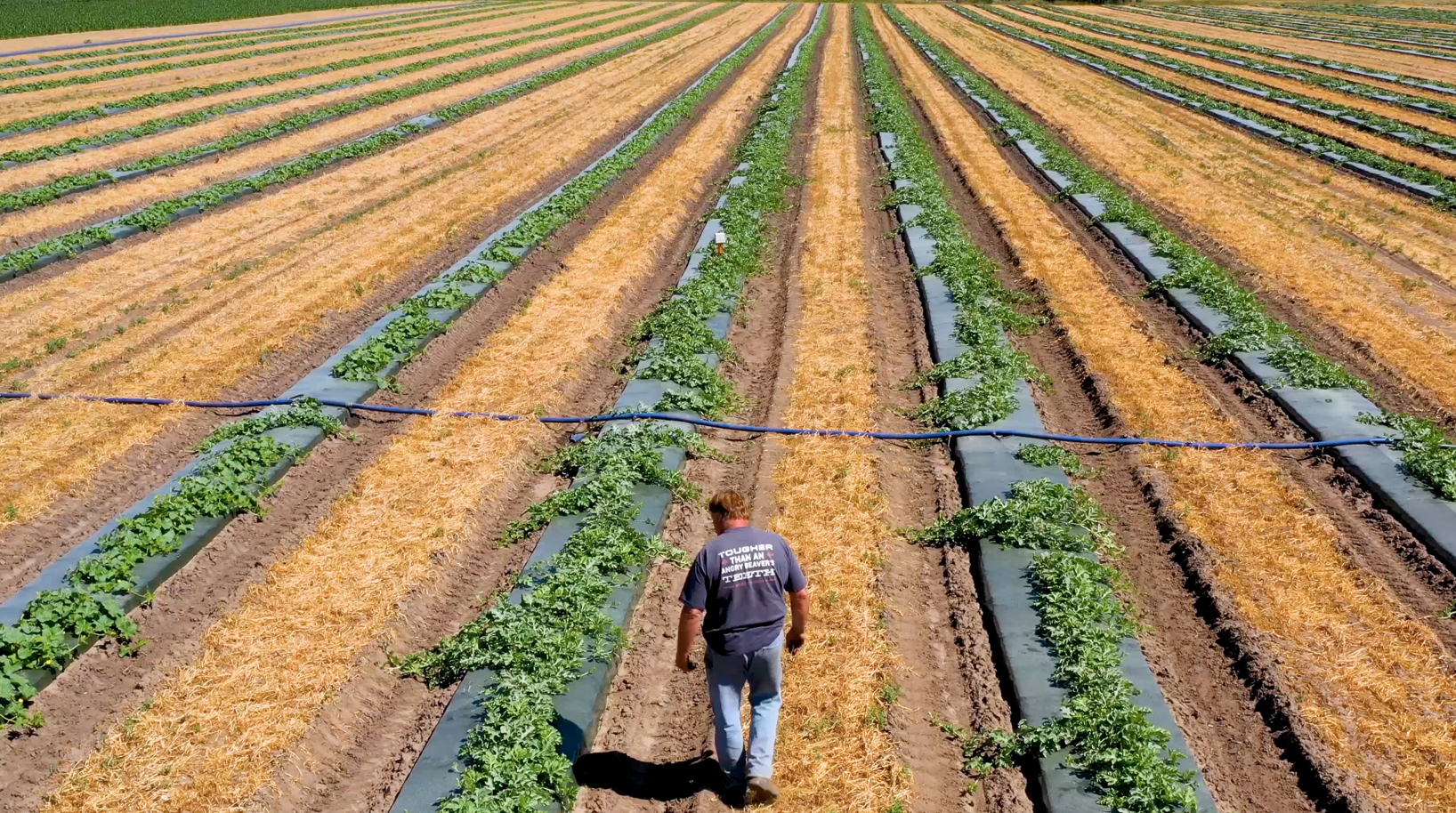The flexible sensor configurations and rugged, portable design features of EarthScout® makes it especially well-suited to meet the needs of fruit and vegetable growers. Being able to measure moisture at different levels, soil structure, electro-conductivity, O2, solar energy and more, gives growers more insight to make the most of every crop they harvest.
EarthScout can easily be adapted with custom configurations for any type of fruit or vegetable, including strawberries, blueberries, melons, sweet corn, peppers, leafy vegetables, cucurbits, brassicas and more. Learn more about our products for indoor growing and outdoor growing.
Typical Actions & Alerts:
Set alerts on your phone – reducing risk by assuring you won’t over (or under) apply costly crop inputs. Use real-time data and analytical tools to make decisions and take action, including:
| Aeration | Insuring | Spraying |
| Cloning | Irrigation | Tilling |
| Cultivating | Pinching | Tissue Sampling |
| Documenting | Planting | Transplanting |
| Fertigation | Pruning | Transporting |
| Fungicide | Ripening | And more! |
| Harvesting | Soil Testing |
The following case history demonstrates how the EarthScout technology is helping a progressive grower maintain the high quality and consistency in his russet potatoes that top local buyers – like Walmart – demand.
Case Study
Customer: Dave W.
Plant: Potatoes
Location: Central Minnesota
Farm:
Highly controlled outdoor with irrigation and fertigation
Goals:
Maximize nutrition, maximize aesthetic appeal, maximize plant disease resistance, maximize profitability and yield, minimalize inputs, optimize irrigation, fertigation, and labor, pest management, establish seasonal trend data, centralize grower data (photos, calendar for scheduling and tracking important dates).
Dave works with family running a 900-acre farm near the Mississippi river in central Minnesota. “We grow corn and soybeans, but our real cash crop is Russet potatoes,” said Dave. Their potatoes grow well in the sandy soils by the river. And their reputation for quality helps secure ongoing contracts with local grocery stores.
“While the sandy soils are good for potato growth, water and nutrients can pass through pretty quickly,” said Dave, “so we rely on the moisture sensors to keep the fertigation levels right.” With over application, nutrients wash through the root zone and are wasted. With under application, potatoes don’t reach the size to earn a baking potato premium price.
“We like to supply the local market as much as possible. We grow some reds and yellow potatoes, but about 80 percent of our acreage is devoted to russets. Luckily, we earned a contract to supply Walmart’s Minnesota stores and that can move a lot of volume. We also sell to stores like Corburns, so we want the size and quality of our potatoes to be consistent.
Irrigation and fertigation are the main factors that lead to maximizing potato growth and consistency. While Dave has been using tensiometer sensors to help determine soil moisture levels, he’s now comparing them against the EarthScout units to see what he prefers. “I put the EarthScout units about five feet away from my tensiometers so I can compare and see what I like best. The tensiometers work pretty well, but they’re a hassle to move around and re-install. I have to use a separate device to measure soil temperature and use a rain gage bucket, too. With the EarthScout, install was super easy, and I can mix and match sensors to configure it how I need,” explains Dave.
Dave also likes that he can switch sensors as needed to get the most out of his growing season. “After the spring, we don’t care as much about soil temperature, and would rather focus on wind speed and solar radiation to figure out our irrigation needs.” he explains.
Next season, Dave plans to use several EarthScout units with configurations that measure moisture, soil temperature, windspeed and solar radiation. “That way we can really dial-in on our irrigation needs. We can have some units that focus on what’s going on in the ground, plus one set up as a local weather station to get a better read on our micro-climate. And once we get the alarms set up on my phone app, that will make it super easy to stay on top of things.”
Learn more about our products for indoor growing and outdoor growing.
EarthScout Units Used In Case Study:
Field (1 EarthScout unit per vegetable species)
EarthScout Specifications:
- Field:
- Sensors:
- Soil Temperature/Moisture/Conductivity
- Soil O2
- Air Temperature/Humidity
- Solar
- Leaf Wetness
- Power Source (Solar Battery)
- Communications (Cellular) – Polling Rate every 45 minutes
- Sensors:
- Greenhouse:
- Sensors:
- Soil Temperature/Moisture/Conductivity
- Air Temperature/Humidity
- Air CO2
- Soil/Air O2
- PPV
- Power Source (120VAC plugin)
- Communications (Wifi or Cellular) – Polling Rate every 45 minutes
- Sensors:
Custom Configure EarthScout® for Any Crop, Soil, or Condition.
EarthScout® was designed by growers like you, to be easily adaptable for any indoor or outdoor crop, soil, or growing condition. With up to five different sensor ports for above and below ground measurements, EarthScout lets you easily mix, match and add sensors as needed.
The visual to the right shows an EarthScout L600. Our above and below ground sensors, when properly installed in the root zone, can measure soil moisture, temperature, and soil EC at various depths. Above ground sensors also measure air temperature, humidity, and solar radiation. All EarthScout devices are portable and can be installed in as little as 15 minutes!
